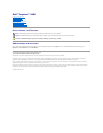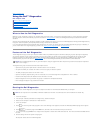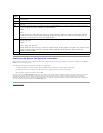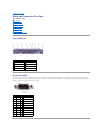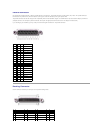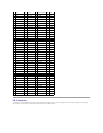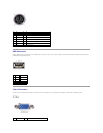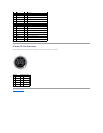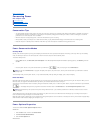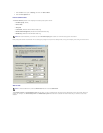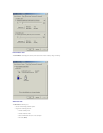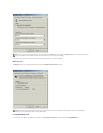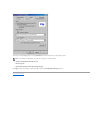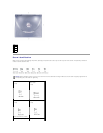
Confirming the System Configuration Information
When you boot your computer from your Drivers and Utilities CD, the diagnostics checks your system configuration information and displays it in the Device
Groups area on the main menu screen.
The following sources supply this configuration information for the diagnostics:
l The system configuration information settings (stored in NVRAM) that you selected while using the system setup program
l Identification tests of the microprocessor, the video controller, the keyboard controller, and other key components
l BIOS configuration information temporarily saved in RAM
Do not be concerned if the Device Groups area does not list the names of all the components or devices you know are part of your computer. For example,
you may not see a printer listed, although you know one is attached to your computer. Instead, the printer is listed as a parallel port. The computer
recognizes the parallel port as LPT1, which is an address that tells the computer where to send outgoing information and where to look for incoming
information. Because your printer is a parallel communications device, the computer recognizes the printer by its LPT1 address and identifies it as a parallel
port. You can test your printer connection in the Parallel Ports tests.
Back to Contents Page
Help
Category
Description
Menu
Provides descriptions of the main menu screen area, the device groups, and the different diagnostic menus and commands and instructions on
how to use them.
Keys
Explains the functions of all the keystrokes that can be used in the Dell Diagnostics.
Device
group
Describes the test group that is presently highlighted in the Device Groups list on the main menu screen. It also provides reasoning for using
some tests.
Device
Describes the function and purpose of the highlighted device in the Device Groups list. For example, the following information appears when
you select the Device Help category for Diskette in the Device Groups list:
Diskette
Drive A
The diskette disk drive device reads and writes data to and from diskettes. Diskettes are flexible recording media, sometimes
contained in hard shells. Diskette recording capacities are small and access times are slow relative to hard disk drives, but
they provide a convenient means of storing and transferring data.
Test
Provides a thorough explanation of the test procedure of each highlighted test group subtest. An example of the Diskette subtest floppy drive
Seek Test is as follows:
Diskette
Drive A - floppy drive Seek Test
This test verifies the drive's ability to position its read/write heads. The test operates in two passes: first, seeking from the
beginning to ending cylinders inclusively, and second, seeking alternately from the beginning to ending cylinders with
convergence towards the middle.
Versions
Lists the version numbers of the subtests that are used by the Dell Diagnostics.



